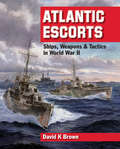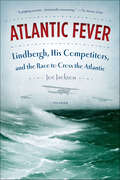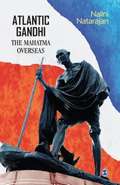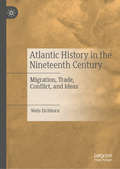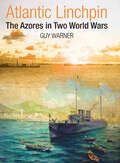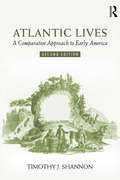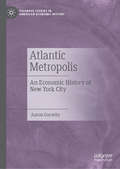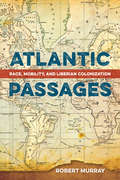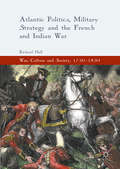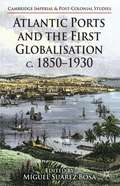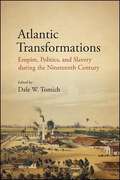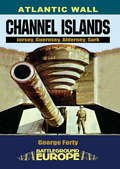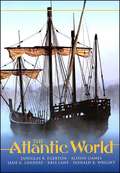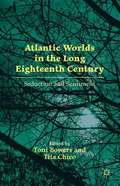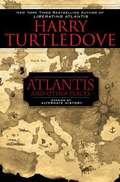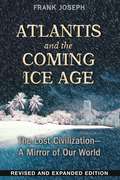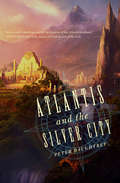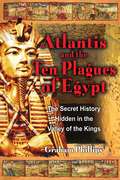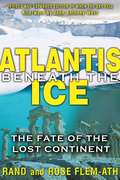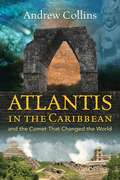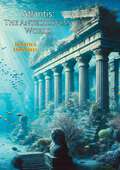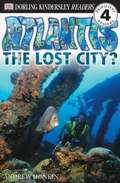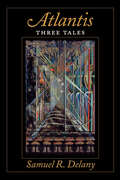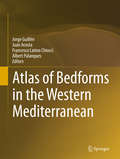- Table View
- List View
Atlantic Escorts: Ships, Weapons & Tactics in World War II
by David K. Brown&“Altogether, a very detailed year-by-year account of escort development for anti-submarine work from the period between the wars to post World War II.&” —The Nautical Magazine Winston Churchill famously claimed that the submarine war in the Atlantic was the only campaign of the Second World War that really frightened him. If the lifeline to North America had been cut, Britain would never have survived; there could have been no build-up of US and Commonwealth forces, no D-Day landings, and no victory in western Europe. Furthermore, the battle raged from the first day of the war until the final German surrender, making it the longest and arguably hardest-fought campaign of the whole war. The ships, technology and tactics employed by the Allies form the subject of this book. Beginning with the lessons apparently learned from the First World War, the author outlines inter-war developments in technology and training, and describes the later preparations for the second global conflict. When the war came the balance of advantage was to see-saw between U-boats and escorts, with new weapons and sensors introduced at a rapid rate. For the defending navies, the prime requirement was numbers, and the most pressing problem was to improve capability without sacrificing simplicity and speed of construction. The author analyses the resulting designs of sloops, frigates, corvettes and destroyer escorts and attempts to determine their relative effectiveness.&“Atlantic Escorts has flowed from the pen of a master who has written so many fine books about the history of ship construction. It is a small masterpiece.&” —Warship International Fleet Review
Atlantic Fever: Lindbergh, His Competitors, and the Race to Cross the Atlantic
by Joe JacksonFor five weeks—from April 14 to May 21, 1927—the world held its breath while fourteen aviators took to the air to capture the $25,000 prize that Raymond Orteig offered to the first man to cross the Atlantic Ocean without stopping.Joe Jackson's Atlantic Fever is about this race, a milestone in American history whose story has never been fully told. Delving into the lives of the big-name competitors—the polar explorer Richard Byrd, the French war hero René Fonck, the millionaire Charles Levine, and the race's eventual winner, the enigmatic Charles Lindbergh—as well as those whose names have been forgotten by history (such as Bernt Balchen, Stanton Wooster, and Clarence Chamberlin), Jackson brings a completely fresh and original perspective to the race to conquer the Atlantic.Atlantic Fever opens for us one of those magical windows onto a moment when the nexus of technology, innovation, character, and spirit led so many contenders from different parts of the world to be on the cusp of the exact same achievement at the exact same time.
Atlantic Gandhi
by Nalini NatarajanUsing the frames of diaspora theory, post-colonial discourse theory and the recent Atlantic turn in studies of resistance, this book brings into relief Gandhi's experience as a traveler moving from a classic colony, India, to the plantation and mining society of South Africa. The author forwards the argument that this move between different modes of production brought Gandhi into contact with indentured laborers, with whom he shared exilic and diasporic consciousness, and whose difficult yet resilient lives inspired his philosophy. It reads Gandhi's nationalistic (that is, anti-colonial) sentiments as born in diasporic exile, where he formed his perspective as a provincial subject in a multiracial plantation. The author's viewpoint has been inspired by the new analytic that has emerged in the last few decades: the Atlantic as an ocean that not just transported the victims of a greedy plantation system, but also saw the ferment of revolutionary ideas. Advance Praise Learned and insightful, Nalini Natarajan, has written an amazing study of Gandhi which shows how transnational, planetary forces from the Caribbean, South Africa, and India were brought to bear on his concept of Indianness. His reading of Thoreau, Ruskin, and Tolstoy helped him form his conception of India as frugal, vegetarian, spiritual, adhering to ahimsa and satyagraha, and a style of anti-modernism which would lead to a very modern struggle of independence on the one hand but separation from the struggles of Zulu in Africa and blacks in Guyana on the other hand. Call them coolie, subaltern, or proletarian, Gandhi's construction of the idea of "India" arose in relation to, but not identity with, the workers of the barracks, the cane field, and the gold mine who produce in war, drugs, and money the defining experiences of modernity. Few will be able to read this book without serious reconsideration of Gandhi's cultural politics and political philosophy. Here is an oceanic Gandhi. Peter Linebaugh author of London Hanged Crime and Civil Society in the Eighteenth Century (1991) and co-author of The Many-Headed Hydra: Sailors, Slaves, Commoners and the Hidden History of the Revolutionary Atlantic (2001) with Marcus Rediker In Atlantic Gandhi: The Mahatma Overseas, Nalini Natarajan places the "coolie woman" in South Africa under the microscope of Gandhian lens against the parallel discourses on their questionable sexuality and value as a labour resource in other sites of Indian indentured labour, including the Caribbean. In doing so she moves us towards a current and more comparative rethinking of the historical clichés that have typified the study of diasporic Indian gender relations under the colonial enterprise. Patricia Mohammed, Professor of Gender and Cultural Studies, University of the West Indies, St Augustine, Caribbean gender studies historian and maker of the award winning film Coolie Pink and Green
Atlantic History in the Nineteenth Century: Migration, Trade, Conflict, and Ideas
by Niels EichhornThis book argues that a vibrant, ever-changing Atlantic community persisted into the nineteenth century. As in the early modern Atlantic world, nineteenth-century interactions between the Americas, Africa, and Europe centered on exchange: exchange of people, commodities, and ideas. From 1789 to 1914, new means of transportation and communication allowed revolutionaries, migrants, merchants, settlers, and tourists to crisscross the ocean, share their experiences, and spread knowledge. Extending the conventional chronology of Atlantic world history up to the start of the First World War, Niels Eichhorn uncovers the complex dynamics of transition and transformation that marked the nineteenth-century Atlantic world.
Atlantic Linchpin: The Azores in Two World Wars
by Guy WarnerOn a map the Azores appear as nine tiny specks in the middle of the Atlantic Ocean, but their location was to prove strategically vital in two world wars. The Atlantic became a crucial battleground twice within the space of 25 years, as the US ‘arsenal of democracy’ sent firstly stores, arms, and equipment, followed by many thousands of troops to fight in Europe. In both desperate and closely fought struggles at sea, Germany sought to stem the flow and thereby win the war by cutting this vital lifeline using a new weapon – the ocean-going submarine. In the First World War, the Azores became a mid-Atlantic refueling location, a base for US and Portuguese naval vessels and – in a hugely innovative contribution to the anti-submarine war – for the patrol seaplanes and flying boats of the US Marine Corps. Portugal was neutral during the Second World War but when Winston Churchill invoked a treaty dating from 1373, permission was given in 1943 for an RAF Coastal Command base to be very rapidly established at Lagens. From there convoys could be protected and U-boats could be harried and sunk, so closing the notorious mid-Atlantic gap. Later, it also became an important staging post for US aircraft, as it had been in the previous conflict. The significance of the Azores has been overlooked in most military histories, but this extensively researched and copiously illustrated book from historian Guy Warner provides a detailed but balanced appraisal. The author has had access to archives and photographic collections in the UK, USA, Portugal, and the Azores, consulting with local historians to produce a book that sheds much new light on a hitherto under-appreciated facet of twentieth-century history.
Atlantic Lives: A Comparative Approach to Early America
by Timothy ShannonAtlantic Lives offers insight into the lived experiences of a range of actors in the early modern Atlantic World. Organized thematically, each chapter features primary source selections from a variety of non-traditional sources, including travel narratives from West Africa, the Caribbean, and Latin America. The fully-revised and expanded second edition goes into even greater depth in exploring the diverse roles and experiences of women, Native Americans, and Africans, as well as the critical theme of emerging capitalism and New World slavery. New chapters also address captivity experiences, intercultural religious encounters, and interracial sexuality and marriage.With classroom-focused discussion questions and suggested additional readings accompanying each chapter, Atlantic Lives provides students with a wide-ranging introduction to the many voices and identities that comprised the Atlantic World.
Atlantic Metropolis: An Economic History of New York City (Palgrave Studies in American Economic History)
by Aaron GurwitzThis book applies the contents of a working economist’s tool-kit to explain, clearly and intuitively, when and why over the course of four centuries individuals, families, and enterprises decided to locate in or around the lower Hudson River Valley. Collectively those millions of decisions have made New York one of the twenty-first century’s few truly global cities. A recurrent analytic theme of this work is that the ups and downs of New York’s trajectory are best understood in the context of what was happening elsewhere in the broader Atlantic world. Readers will find that the Atlantic perspective viewed through an economic lens goes a long way toward clarifying otherwise quite perplexing historical events and trends.
Atlantic Passages: Race, Mobility, and Liberian Colonization
by Robert MurrayEstablished by the American Colonization Society in the early nineteenth century as a settlement for free people of color, the West African colony of Liberia is usually seen as an endpoint in the journeys of those who traveled there. In Atlantic Passages, Robert Murray reveals that many Liberian settlers did not remain in Africa but returned repeatedly to the United States, and he explores the ways this movement shaped the construction of race in the Atlantic world.Tracing the transatlantic crossings of Americo-Liberians between 1820 and 1857, in addition to delving into their experiences on both sides of the ocean, Murray discusses how the African neighbors and inhabitants of Liberia recognized significant cultural differences in the newly arrived African Americans and racially categorized them as “whites.” He examines the implications of being perceived as simultaneously white and black, arguing that these settlers acquired an exotic, foreign identity that escaped associations with primitivism and enabled them to claim previously inaccessible privileges and honors in America.Highlighting examples of the ways in which blackness and whiteness have always been contested ideas, as well as how understandings of race can be shaped by geography and cartography, Murray offers many insights into what it meant to be black and white in the space between Africa and America.
Atlantic Politics, Military Strategy and the French and Indian War (War, Culture and Society, 1750-1850)
by Richard Hall1755 marked the point at which events in America ceased to be considered subsidiary affairs in the great international rivalry that existed between the colonial powers of Great Britain and France. This book examines the Braddock Campaign of 1755, a segment of the wider 'Braddock Plan' that aimed to drive the French from all of the contested regions they occupied in North America. Rather than being an archetypal military history-styled analysis of General Edward Braddock's foray into the Ohio Valley, this work will argue that British defeat at the infamous Battle of the Monongahela should be viewed as one that ultimately embodied military, political and diplomatic divergences and weaknesses within the British Atlantic World of the eighteenth century. These factors, in turn, hinted at growing schisms in the empire that would lead to the breakup of British North America in the 1770s and the birth of the future United States. Such an interpretation moves away from the conclusion so often advanced that Braddock's Defeat was a distinctly, and principally 'British', martial catastrophe; hence allowing the outcome of this pivotal event in American history to be understood in a different vein than has hitherto been apparent.
Atlantic Ports and the First Globalisation, c. 1850–1930 (Cambridge Imperial and Post-Colonial Studies Series)
by Miguel Suárez BosaPort cities were the means through which cultural and economic exchange took place between continental societies and the maritime world. In examining the ports of Brazil, the Caribbean and West Africa, this volume will provide fresh insight into the meaning of the 'First Globalisation'.
Atlantic Transformations: Empire, Politics, and Slavery during the Nineteenth Century (SUNY series, Fernand Braudel Center Studies in Historical Social Science)
by Dale W. TomichThis book presents a new approach to nineteenth-century Atlantic history by extending the analytical perspective of the second slavery to questions of empire, colonialism, and slavery. With a focus on Latin America, Brazil, the Spanish Caribbean, and the United States, international scholars examine relations among empires, between empires and colonies, and within colonies as parts of processes of global economic and political restructuring. By treating metropolis-colony relations within the framework of the modern world-economy, the contributors call attention to the political, economic, and cultural interdependence and interaction of global and local forces shaping the Atlantic world. They reinterpret as specific local responses to global processes the conflicts between empires, within imperial relations, the formation of national states, the creation of new zones of agricultural production and the decline of old ones, and the emergence of liberal ideologies and institutions.
Atlantic Wall: Jersey, Guernsey, Alderney, Sark (Battleground Europe)
by George FortyWhile the Germans did not succeed in invading Britain during World War II, they occupied a number of islands in the English Channel. The English population continued to lead fairly normal lives, while the German occupiers built some of the most extensive fortifications of the Second World War. As the war progressed, British commandos made occasional attacks, resulting in harsher conditions on the islands. The German garrisons were totally isolated by the D-Day landings, but managed to hold on through the following winter to surrender in May 1945. The author, a renowned military historian, examines these questions with complete candor, in addition to his study of the famous fortifications. All of the wartime events and the islands and their fortifications as they are today are covered in the popular Battleground Europe style, with illustrations, maps and then-and-now photographs.
Atlantic World: A History, 1400-1888
by Donald R. Wright Douglas R. Egerton Alison Games Kris E. Lane Jane G. LandersBefore the voyage of Columbus in 1492, the Atlantic Ocean stood as a barrier to contact between the people (and their ideas and institutions), plants, animals, and microbes of Eurasia and Africa on the one hand and the Americas on the other. Following Columbus's voyage, the Atlantic turned into a conduit for transferring these things among the four continents bordering the ocean in ways that affected people living on each of them. The appearance of The Atlantic World marks an important achievement, for it stands out as the first successful attempt to combine the many strains of Atlantic history into a comprehensive, thoughtful narrative. At the core of this ground-breaking and eloquently written survey lies a consideration of the relationships among people living in Europe, Africa, and the Americas, with a focus on how these relationships played important roles--often the most important roles--in how the histories of the people involved unfolded. The ways of life of millions of people changed, sometimes for the better but often for the worse, because of their relationship to the larger Atlantic world. And unlike existing texts dealing with one or another aspect of Atlantic history, The Atlantic World does not subjugate the history of Africa and South America to those of the "British Atlantic" or Europe. With historians and other scholars beginning to reconceptualize the Atlantic World as a dynamic zone of exchange in which people, commodities, and ideas circulated from the mid-fifteenth century until the dawn of the twentieth century, the interconnections between people along the Atlantic rim create a coherent region, one in which events in one corner inevitably altered the course of history in another. As this book testifies, Atlantic history, properly understood, is history without borders--in which national narratives take backstage to the larger examination of interdependence and cultural transmission. Conceived of and produced by a team of distinguished authors with countless hours of teaching experience at the college level, this thoughtfully organized, beautifully written, and lavishly illustrated book will set the standard for all future surveys intended as a core text for the new and rapidly growing courses in Atlantic History.
Atlantic Worlds in the Long Eighteenth Century
by Toni Bowers Tita ChicoInnovative and multidisciplinary, this collection of essays marks out the future of Atlantic Studies, making visible the emphases and purposes now emerging within this vital comparative field. The contributors model new ways to understand the unexpected roles that seduction stories and sentimental narratives played for readers struggling to negotiate previously unimagined differences between and among people, institutions, and ideas.
Atlantis and Other Places
by Harry TurtledoveAtlantis and Other Places includes twelve amazing stories of ancient eras, historical figures, mysterious events, and out-of-this- world adventures from the incomparable Harry Turtledove. .
Atlantis and the Coming Ice Age: The Lost Civilization--A Mirror of Our World
by Frank JosephReveals the parallels between the rise and fall of Atlantis, cultures in ancient Mesoamerica, and our modern civilization • Links the demise of Atlantis with the birth of the Olmec civilization in Mexico, the beginning of the first Egyptian dynasty, and the start of the Mayan Calendar • Reveals the Atlantean and Mayan prophecy of an eternal cycle of global creation, destruction, and renewal and how we are headed into a destructive phase • Shows how ancient prophecies correlate precisely with the latest climatology studies, the rising incidence of solar flares, and papers from Pentagon and NASA analysts With the passing of the Mayan Calendar’s end date we can now focus on the true significance of what the Maya and their predecessors were trying to convey to future civilizations. Frank Joseph reveals how the Mayan prophecy, symbolized by their calendar, was created through the combined genius of Atlantis and Lemuria and predicts an eternal cycle of global creation, destruction, and renewal. He shows how this cycle correlates precisely with scientific studies on glacial ice cores and predictions from the Hopi, the Incas, and the Scandinavian Norse as well as the visions of Edgar Cayce. He links the demise of Atlantis with the birth of the Olmec civilization in Mexico (the progenitors of the Maya), the beginning of the first Egyptian dynasty, and the start of the Mayan Calendar. Drawing on the latest climatology studies and papers from Pentagon and NASA analysts, he reveals that we are on the brink of a destructive phase in the global cycle of change as predicted by the Atlanteans and the Maya. The world’s current political, economic, and cultural deterioration is paralleled by unprecedented storms and record temperatures, massive solar flares, tectonic disturbances, and fissuring sea floors that could release dangerous reservoirs of methane gas into the environment--all of which signals we are headed into another ice age. Despite the Atlanteans’ greater understanding of the cyclical nature of catastrophes and of the human role in them, Joseph reveals the mistakes they made that played a crucial role in their civilization’s destruction. By recognizing the self-destructive patterns of Atlantis in our own civilization, we can learn from their mistakes to reestablish civilization’s cosmic balance before time runs out.
Atlantis and the Silver City
by Peter DaughtreyHistory's most intriguing mystery may have been solved--recently unearthed evidence points towards the real location of the ancient, lost city of Atlantis. More than 2,000 years ago Plato laid down around a hundred cryptic clues about the location of the lost world of Atlantis. Since then countless experts have tried to crack Plato's code. Some claim Atlantis lies under the volcanic rocks of Santorini. Others place it in the Bermuda Triangle, off the coast of Africa, or say it is lost forever beneath the waves of the Atlantic Ocean. But what if Atlantis is far closer than we think? What if we can walk its cobble stoned streets today? After a forensic twenty-year examination of Plato's writings, Peter Daughtrey says we can do just that. Having matched an unprecedented number of Plato's clues, Daughtrey outlines the full reach of the ancient empire--and pinpoints the exact location of its once glittering capital city. His quest for the truth about Atlantis runs from the dusty stone quarries of Portugal and the hieroglyphs of Egyptian temples to the newly refurbished museums of Baghdad. It includes the discovery of long-forgotten, vitally significant artifacts, sensational evidence of a lost alphabet and a revealing analysis that identifies today's descendants of this most ancient civilization. Detailed, accurate, and told with enthusiasm and verve, Atlantis and the Silver City even reveals the location of another city from the ancient empire of Atlantis. For just beyond the golden beaches of Portugal another ancient undersea settlement is waiting to be discovered . . .
Atlantis and the Ten Plagues of Egypt: The Secret History Hidden in the Valley of the Kings
by Graham PhillipsShows how a desecrated tomb in the Valley of the Kings holds the key to the true history of the destruction of Atlantis• Reveals that Tomb 55 in the Valley of the Kings was designed not to keep intruders out, but to trap something inside• Provides forensic evidence proving that the mask believed to be the face of Tutankhamun is actually that of his elder brother SmenkhkareIn Atlantis and the Ten Plagues of Egypt, Graham Phillips explores the excavation of a mysterious and ritually desecrated tomb in the Valley of the Kings, Tomb 55, which he contends holds the key to the true history of the destruction of Atlantis. Unlike other Egyptian tombs designed to keep intruders out, Tomb 55 was constructed to keep something imprisoned within, specifically Smenkhkare, the older brother of Tutankhamun who was deemed responsible for the ten plagues in Egyptian history, to prevent such tragedies from ever happening again. The forensic findings from this tomb coupled with compelling new evidence from the polar ice caps provide sensational evidence that the parting of the Red Sea, the deaths of the first born, and the other plagues that afflicted Egypt were all actual historical events. Core samples from the polar ice caps indicate that a gigantic volcanic eruption took place in the eastern Mediterranean around the time of Amonhotep’s reign. Other research suggests this to have been the time of the eruption that destroyed the Greek island of Thera, one of the likely locations of Atlantis, and that the subsequent cataclysm may explain the unusual lack of resistance to the new religion installed by Amonhotep’s son, Akhenaten, when he took power several years later.
Atlantis beneath the Ice: The Fate of the Lost Continent
by Rand Flem-Ath Rose Flem-Ath John Anthony WestScientific and mythological evidence that Antarctica was once Atlantis • Reveals how the earth’s crust shifted in 9600 BCE, dragging Atlantis into the polar zone beneath miles of Antarctic ice • Examines ancient yet highly accurate maps, including the Piri Reis map of 1513, which reveals a pre-glacial Antarctica • Shows how myths of floods and disaster from around the world all point to a common source In this completely revised and expanded edition of When the Sky Fell, Rand and Rose Flem-Ath show that 12,000 years ago vast areas of Antarctica were free from ice and home to the kingdom of Atlantis, a proposition that also elegantly solves the mysteries of ice ages and mass extinctions, the simultaneous worldwide rise of agriculture, and the source of devastating prehistoric climate change. Expanding upon Charles Hapgood’s theory of earth crust displacement, which was championed by Albert Einstein, they examine ancient yet highly accurate world maps, including the Piri Reis map of 1513, and show how the earth’s crust shifted in 9600 BCE, dragging Atlantis into the polar zone where it now lies beneath miles of Antarctic ice. From the Cherokee, Haida, and Okanagan of North America to the earliest records of Egypt, Iran, Mexico, and Japan, they reveal that ancient myths of floods, lost island paradises, and visits from advanced godlike peoples from all corners of the globe all point to the same worldwide catastrophe that resulted in Atlantis’s demise. The authors explain how the remaining Atlanteans, amid massive earthquakes and epic floods, evacuated and spread throughout the world, resulting in the birth of the first known civilizations. Including rare material from the archives of Charles Hapgood, Albert Einstein, and Dwight D. Eisenhower, the Flem-Aths explain how an earth crust displacement could happen again in the future, perhaps in correspondence with high solar activity. With new scientific, genetic, and linguistic evidence in support of Antarctica as the location of long-lost Atlantis, this updated edition convincingly shows that Atlantis was not swallowed by the sea but was entombed beneath miles of polar ice.
Atlantis in the Caribbean: And the Comet That Changed the World
by Andrew CollinsAn in-depth investigation of the mounting evidence that Atlantis was located in the Bahamas and Caribbean, near Cuba in particular• Explains how Atlantis was destroyed by a comet, the same comet that formed the mysterious Carolina Bays • Reveals evidence of complex urban ruins off the coasts of Cuba and the Bahamas• Shows how pre-Columbian mariners visited the Caribbean and brought back stories of Atlantis’s destruction• Compares Plato’s account with ancient legends from the indigenous people of North and South America, such as the Maya, the Quiché, and the Yuchi of OklahomaThe legend of Atlantis is one of the most intriguing mysteries of all time. Disproving many well-known Atlantis theories and providing a new hypothesis, the evidence for which continues to build, Andrew Collins shows that what Plato recounts is the memory of a major cataclysm at the end of the last Ice Age 13,000 years ago, when a comet devastated the island of Cuba and submerged part of the Bahaman landmass in the Caribbean. He parallels Plato’s account with corroborating ancient myths and legends from the indigenous people of North and South America, such as the Maya of Mesoamerica, the Quiché of Peru, the Yuchi of Oklahoma, the islanders of the Antilles, and the native peoples of Brazil. The author explains how the comet that destroyed Atlantis in the Caribbean was the same comet that formed the mysterious and numerous elliptical depressions, known as the Carolina Bays, found across the mid-Atlantic United States. He reveals evidence of sunken ruins off the coasts of both Cuba and the Bahamas, ancient complexes spanning more than 10 acres that clearly suggest urban development and meticulously planned road systems.Revealing the identity of Plato’s “opposite continent” as ancient America, Collins argues that Plato’s story was first carried back to the Mediterranean world by trans-Atlantic mariners, such as the Phoenicians and Carthaginians, as early as the first millennium BC. He offers additional ancient trans-Atlantis trade evidence from Egyptian mummies, Roman shipwrecks in the Western Atlantic, and the African features of giant stone heads in Mexico. Piecing together the final days of Atlantis and the wildfires, earthquakes, tsunamis, days of darkness, and advancement of ice sheets that followed the ancient comet’s impact, Collins establishes not only that Atlantis did indeed exist but also that remnants of it survive today, most obviously in Cuba, Atlantis’s original central island.
Atlantis: The Antediluvian World (Dover Occult Ser.)
by Ignatius DonnellyIgnatius Donnelly’s "Atlantis: The Antediluvian World" is a groundbreaking exploration of one of the most enduring mysteries of human history—the lost continent of Atlantis. First published in 1882, this seminal work has captivated readers for over a century with its bold theories, meticulous research, and compelling narrative.Donnelly’s book delves into the ancient myths and legends that surround Atlantis, weaving together historical, geological, and cultural evidence to support his argument that Atlantis was a real and highly advanced civilization that existed before a catastrophic event submerged it beneath the ocean. Drawing from a wide range of sources, including Plato’s dialogues, ancient texts, and modern scientific findings, Donnelly constructs a fascinating and plausible case for the existence of this fabled land."Atlantis: The Antediluvian World" explores the possible locations of Atlantis, examining geological formations and ancient ruins that might provide clues to its whereabouts. Donnelly also investigates the technological and cultural achievements attributed to the Atlanteans, suggesting that they possessed advanced knowledge in fields such as architecture, engineering, and navigation, which they shared with other ancient civilizations around the world."Atlantis: The Antediluvian World" remains a classic in the field of speculative history and alternative archaeology. Donnelly’s engaging writing style, combined with his thorough research and imaginative theorizing, makes this book a must-read for anyone fascinated by ancient mysteries, lost civilizations, and the enduring allure of Atlantis. Whether you are a skeptic or a believer, Donnelly’s work will challenge your perceptions and ignite your curiosity about one of history’s greatest enigmas.
Atlantis: The Lost City? (DK Readers)
by Andrew Donkin'Atlantis - The Story of the Lost Continent' probes the question of truth or myth. Follow the evolution of a mystery that has captured the human imagination from ancient Greece to the present. These stories testify to the courage of the human spirit. These 48-page books about fascinating subjects like pirates, mummies, and volcanoes are for proficient readers who can understand a rich vocabulary and challenging sentence structure. In addition to the stunning photographs, informative sidebars, and glossary, readers will find archival photographs and paintings. Averaging 4,500 to 5,000 words in length, Level 4 books are 40 percent pictures and 40 percent text.
Atlantis: Three Tales
by Samuel R. DelanyFrom the Hugo and Nebula–winning author, three literary tales trace the intricate interdependencies of memory, experience, and the self. Wesleyan University Press has made a significant commitment to the publication of the work of Samuel R. Delany, including this recent fiction, now available in paperback. The three long stories collected in Atlantis: three tales—&”Atlantis: Model 1924,&” &“Erik, Gwen, and D. H. Lawrences Aesthetic of Unrectified Feeling,&” and &“Citre et Trans&” —explore problems of memory, history, and transgression. Winner of both the Hugo and Nebula awards, and Guest of Honor at the 1995 World Science Fiction Convention in Glasgow, Delany was won a broad audience among fans of postmodern fiction with his theoretically sophisticated science fiction and fantasy. The stories of Atlantis: Three Tales are not science fiction, yet Locus, the trade publication of the science fiction field, notes that the title story &“has an odd, unsettling power not usually associated with mainstream fiction.&” A writer whose audience extends across and beyond science fiction, black, gay, postmodern, and academic constituencies, Delany is finally beginning to achieve the broader recognition he deserves.&“Delany, who&’s best known for his science fiction . . . takes a variety of literary turns in these three novellas that chronicle the experience of the African American writer in the 20th century. . . . Balanced and full of intricate layers of prose, these novellas present a potpourri of literary references, detailed flashbacks and experimental page layouts. Delany seamlessly meshes graceful prose, cultural and philosophical depth and a knowledge of different forms and voices into a truly heady, literate blend.&” —Publishers Weekly&“Delany sketches sympathetic portraits of young black men aswim in the dense, sweet hives of American cities.&” —New York Times Book Review
Atlas of American Military History
by Stuart MurraySuitable for high school level and general readers, this book describes 28 significant military campaigns, both domestic and international, from the French and Indian War through the current war in Iraq. Arrangement is roughly chronological, beginning with on wars of the colonial period and of the young republic and continuing with the Civil War, emerging world power, World Wars I and II, hot wars of the Cold War, and activities of the lone superpower. Each chapter concludes with a section on instruments of war during the period under consideration. Annotation ©2004 Book News, Inc., Portland, OR (booknews.com)
Atlas of Bedforms in the Western Mediterranean (Springer Geography)
by Jorge Guillén Juan Acosta Francesco Latino Chiocci Albert PalanquesThis atlas illustrates the characteristics of present-day bedforms, from the shoreline to deep-sea environments, and it also includes short reviews of the main mechanisms that generate such bedforms. The atlas is aimed at the research community, in addition to students, the public at large and companies with interests in the marine environment. The book is divided into seven sections composed of a number of short chapters: 1) bedform analysis and the main physical processes, 2) bedforms in the coastal zone, 3) bedforms on prodeltas and sorted bedforms, 4) bedforms on the continental shelf, 5) bedforms and benthos, 6) bedforms in submarine canyons and 7) slope and deep-sea bedforms. This atlas offers a comprehensive, though not exhaustive, view of the diversity of bedforms and associated processes and of the morphological and temporal scales in the enclosed tideless western Mediterranean Sea.
